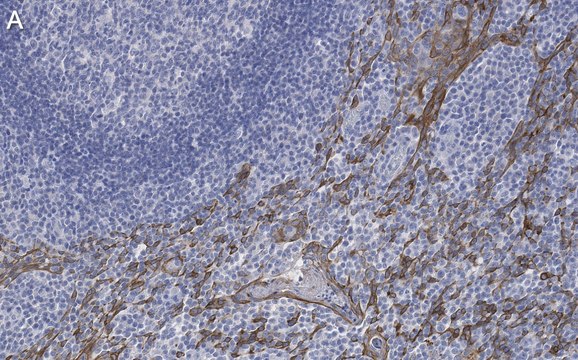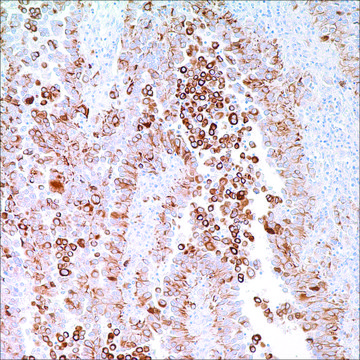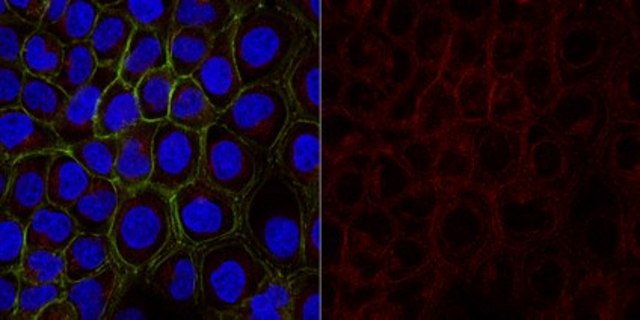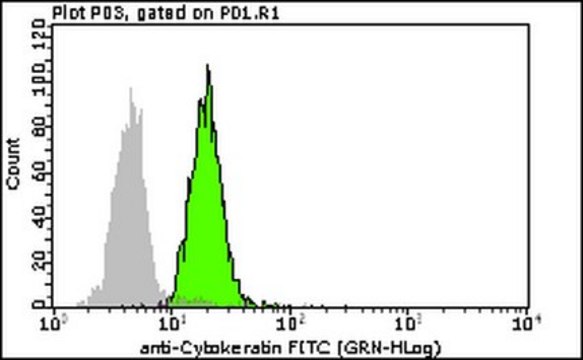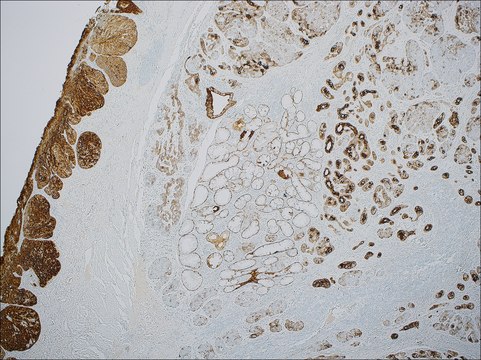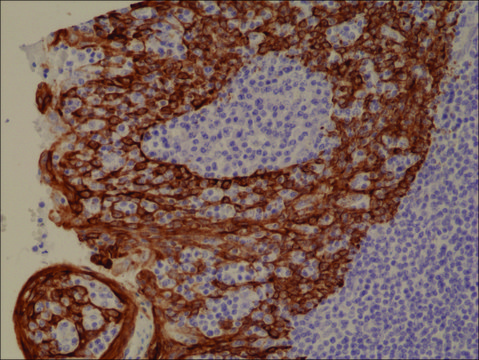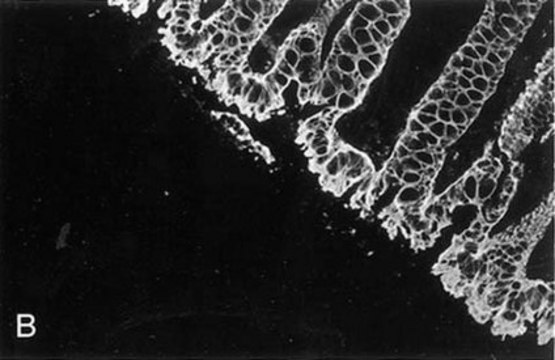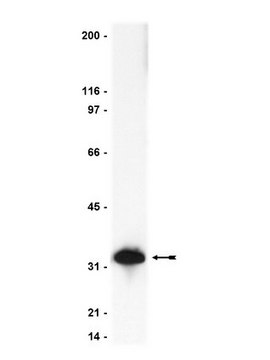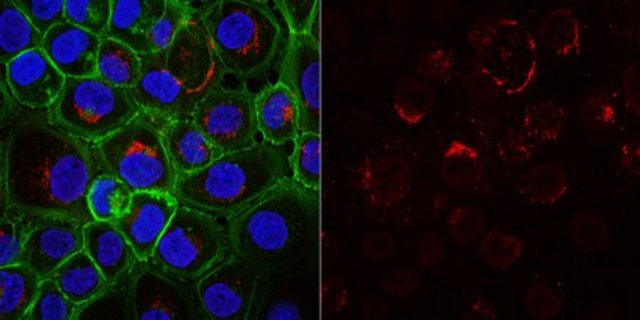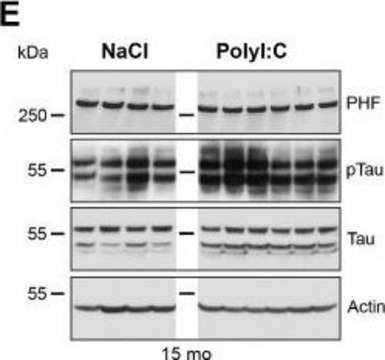MAB1620
Anti-Cytokeratin 5 Antibody, 6, clone D5/16B4
clone D5/16B4, Chemicon®, from mouse
Synonym(s):
58 kDa cytokeratin, Cytokeratin-5, CK-5, Keratin-5, K5, Type-II keratin Kb5
About This Item
Recommended Products
biological source
mouse
Quality Level
antibody form
purified immunoglobulin
clone
D5/16B4, monoclonal
species reactivity
rat, mouse, human
manufacturer/tradename
Chemicon®
technique(s)
immunofluorescence: suitable
immunohistochemistry: suitable (paraffin)
western blot: suitable
isotype
IgG1
NCBI accession no.
UniProt accession no.
shipped in
wet ice
target post-translational modification
unmodified
Gene Information
human ... KRT5(3852)
General description
Specificity
Immunogen
Application
A 1:50-1:100 dilution from a previous lot was used for paraffin, high-temperature antigen retrieval required (Pressure cooker, Citrate/EDTA buffer pH 6.0, 4 minutes at full pressure).
Immunofluorescence:
A previous lot of this antibody was used in Immunofluorescence.
Western blot:
Recognizes a 58kDa and 56kDa band corresponding to cytokeratin 5 and 6.
Optimal working dilutions must be determined by end user.
Cell Structure
Cytoskeleton
Quality
Western Blot Analysis:
1:500 dilution of this lot detected cytokeratin 5/6 on 10 ug of A431 lysates.
Target description
Physical form
Storage and Stability
Analysis Note
A431 cell lysate, human bladder tumor tissue.
Other Notes
Legal Information
Disclaimer
recommended
Storage Class Code
10 - Combustible liquids
WGK
WGK 2
Certificates of Analysis (COA)
Search for Certificates of Analysis (COA) by entering the products Lot/Batch Number. Lot and Batch Numbers can be found on a product’s label following the words ‘Lot’ or ‘Batch’.
Already Own This Product?
Find documentation for the products that you have recently purchased in the Document Library.
Our team of scientists has experience in all areas of research including Life Science, Material Science, Chemical Synthesis, Chromatography, Analytical and many others.
Contact Technical Service